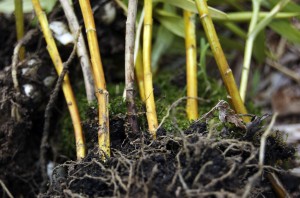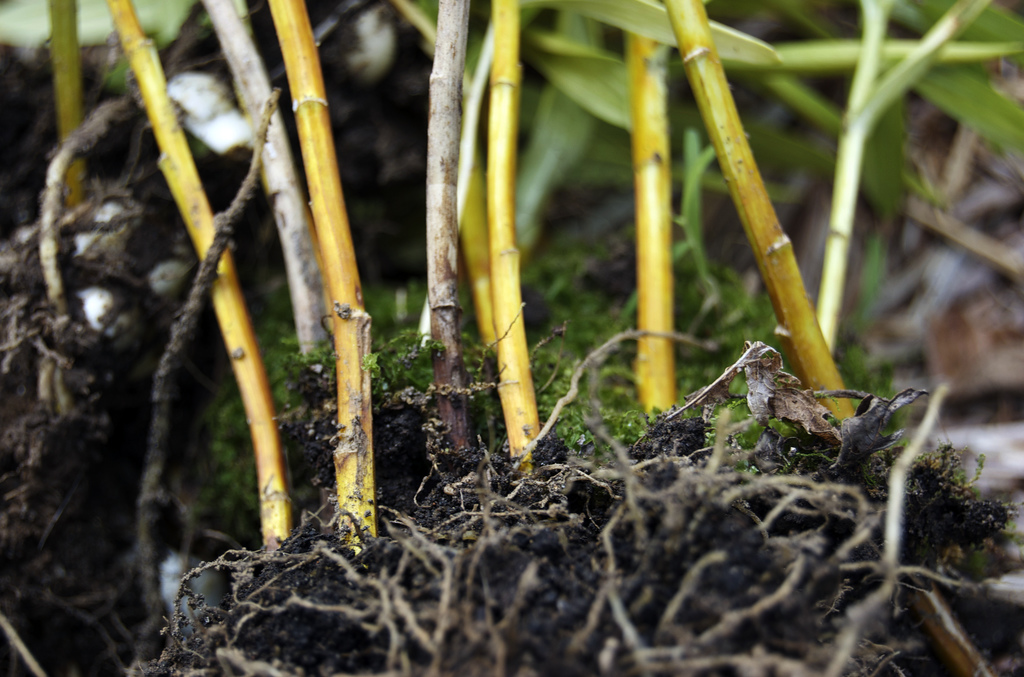
Chris said I should blog more about what I’m doing, so here I am. Blogging about what I am doing.
Raking in the Green
Something that is very dear to me is gardening. It is something my mom did and I grew up enjoying. But it is not just about the hobby. I enjoy creating something meaningful for my family – something that is better than the grocery store, not just in quality, but in flavor as well.
Last summer, our garden began. We had unseasonably cold weather last spring, but I started plants indoors to circumvent late crops. I also bought some fruit trees: an apple, a peach, a nectarine, a plum and a cherry. I later bought some goji seeds. And then my mom bought some dwarf banana seeds and gave me some gooseberry bushes. And I then bought 5 grapes, 4 blueberries, 2 blackberries and some much needed fencing. My intention with all these permanent additions to the landscape is to create a useful landscape.
Now, this year, I have my plants started – and after only starting them on the 8th of March, they are nearly all sprouted and some are ready to transplant already – and my plant order placed. I started cucumbers, kale, lettuce, spinach, celery, melons (Amish muskmelon, Moon & Stars, Sugar Baby and Yellow Doll watermelons), squash (acorn, butternut, and sunshine, zucchini), ground cherry, cauliflower, eggplant, okra, peppers (bell, banana and jalepeno), and tomatoes (cherry, pear, beefsteak, roma). I still have my 6 raspberry plants, 75 strawberry plants, 2 pawpaw trees and 4 liberty apple trees on order. To some of you, I know you are thinking, “That’s all so expensive!” It’s not really. I only used 2 – 4 seeds out of most packets and the fruit plants, bushes and trees will be staples in our landscape for years to come! I can refridgerate or freeze the seeds I have to make them last a little bit longer. The final thought – it is much cheaper to produce your own organic foods than it is to purchase the foods from the market. You can’t purchase this quality this cheaply at any store. Besides, this meal does not travel 1500 miles from farm to table. This one only travels 100 feet from the furthest point.
Another thing to note above. I provided links to the seeds I bought, if they were available online. Buying heirloom varieties is one way to ensure you can get the quality and reuse seed from the fruits you grow – dry the seeds on a paper towel and you may never put a seed order in again! Go to the Seed Savers Exchange for more heirloom seeds. Also, look for plants that perform well in your area. Consider what the plant wants – soil pH, sun, soil consistency, nutrients, sensitivity to wind, frost, water requirements, etc.
Even do what I am trying this year and plant in groups. This works because your garden plants can be tiered (corn in the middle with a tomato at the base and a pepper in the front and some pansies at the bottom), pairing certain plants can ward off diseases or help with pollination, and your garden looks more interesting. Something to consider as well is cycling the plants to different locations in the garden to make sure soil nutrients are not depleted and diseases do not build up in the soil. Only plant the same type of plant in the same location every three years – no less!
The Bockers
Two years ago on Memorial Day, I bought my first chicks. Six young pullets were then housed in the brooder cage my mom, dad and I built over the weekend with recycled materials and 1/4″ hardware cloth. There they stayed until the coop deluxe was completed the weekend before Thanksgiving.
Sure, we lost a few – more like a lot. The winter of 2007 we lost eleven to various predators. We only had 3 hens left come springtime. The summer of 2008, we replenished our hens with chicks and finally started getting eggs in October.
Now we have 5 hens, including 2 Buff Orpingtons, a White Plymoth Rock, a Rhode Island Red, and 1 grouchy Wheaton Ameraucana. We also have 5 pullets just about to lay, including 2 Black Stars (Sex Links), 2 Barred Plymouth Rocks and 1 Rhode Island Red. And, with the chicks bringing up the rear, I have some Welsummers incubating in the basement that should hatch a week from tomorrow! I will only keep a few of the Welsummers though, as I do not want to have more than 15 chickens, otherwise, I will have to expand my run.
The recommended minimum square feet per bird is 2 in the coop and 8 of outdoor space. My 7’x10′ coop and 12’x20′ run, could accomodate 30 chickens, but they’re much happier with larger accomodations! I am even thinking about buying another kennel panel kit to expand the run from 240 square feet to 640 square feet. With so many predators and stray dogs around, I just cannot stomach letting my flock free range any longer.
Doggone Dogs
Speaking of strays, several friends, Chris and I are forming a rescue group. We will focus on kill shelters in St. Louis and in surrounding counties. Any donations are greatly appreciated. Our wishlist includes pet food, crates, old blankets and towels, collars, leashes and volunteers! Chris is doing the website, but it is not ready to yet be unveiled. It’s still in the Frankenstein stages, mostly because I need to add content, but, nevertheless I will post when it is ALIVE!

JUNG!!!!